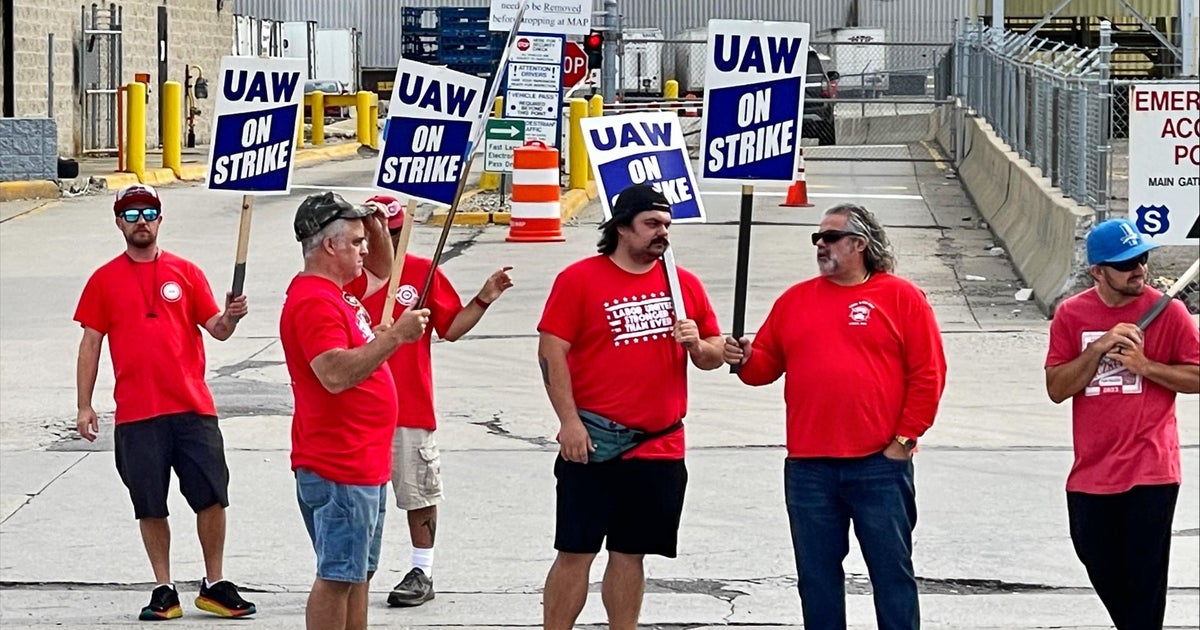The United Auto Workers is expanding its historic strike against Detroit’s Big Three automakers to include General Motors and Stellantis parts distribution centers across 20 states.
UAW President Shawn Fain said during a Facebook Live address on Friday that workers at 38 GM and Stellantis facilities will walk off the job at noon local time.
“We’re not going to wait around forever for a fair contract,” he said. “The companies know how to make this right.”
Notably, the labor group is not targeting Ford for additional strikes, with Fain saying the union is making progress on wage, job security and other issues and that the company “is serious about reaching a deal.”
The UAW’s move to escalate the work stoppage highlights how far the sides remain apart on core union demands, which include a 36% pay increase across a four-year contract, annual cost-of-living adjustments, pension benefits for all employees, greater job security and a four-day work week.
The automakers argue they’re facing pressure to keep costs low in order to compete with Tesla and foreign car makers, while also investing money into the rapidly growing electric vehicle market. The companies also say their counteroffers are reasonable, while signaling they are willing to negotiate further.
“If we don’t continue to invest, we will lose ground — quickly,” GM President Mark Reuss wrote Wednesday in an op-ed published in the Detroit Free Press. “Our competitors across the country and around the world, most of whom are non-union, will waste no time seizing the opportunity we would be handing them.”
Stellantis, the parent company of Chrysler, Dodge, Jeep and RAM, made a counteroffer on Wednesday, which the union said it was reviewing.
What does the UAW want?
The UAW is also seeking limited use of temporary workers and more paid time off, as well as stronger job protections, including the right to strike over plant closings.
The union argues that the Big Three reaped hefty profits as car prices surged during the pandemic, while workers failed to enjoy the same benefits.
“Autoworkers have waited long enough to make things right at the Big Three,” Fain said in a video earlier this week. “We’re not waiting around, and we’re not messing around.”
President Biden last week expressed support for striking autoworkers‘ demand for a larger share of industry profits.
“Companies have made some significant offers, but I believe it should go further — to ensure record corporate profits mean record contracts,” Mr. Biden said.
Stand-up strike
The so-called stand-up strike targeting select auto plants kicked off on September 15 after negotiations between the automakers and the UAW failed to reach a new labor agreement before their contract with union members expired.
Automakers responded by announcing temporary layoffs at some factories, beginning with Ford Motor which had temporarily laid off 600 non-striking workers at its assembly plant in Wayne, Michigan, on September 15, only hours after employees at the facility had walked off the job.
Stellantis announced Wednesday it was temporarily laying off 68 workers at a plant outside Toledo because of the ongoing strike, with more layoffs expected at its transmission plant in Kokomo, Indiana. GM said it will lay off 2,000 workers at its plant in Kansas City, Kansas, because there’s no work for them since they depend on parts from the Wentzville facility.
Workers from those plants will now be paid through the UAW’s $825 million strike fund.
Experts say the economic impact of the UAW strike could extend beyond the auto industry. A work stoppage lasting three weeks could cost the U.S. economy $415 million, according to an estimate from The Perryman Group.

